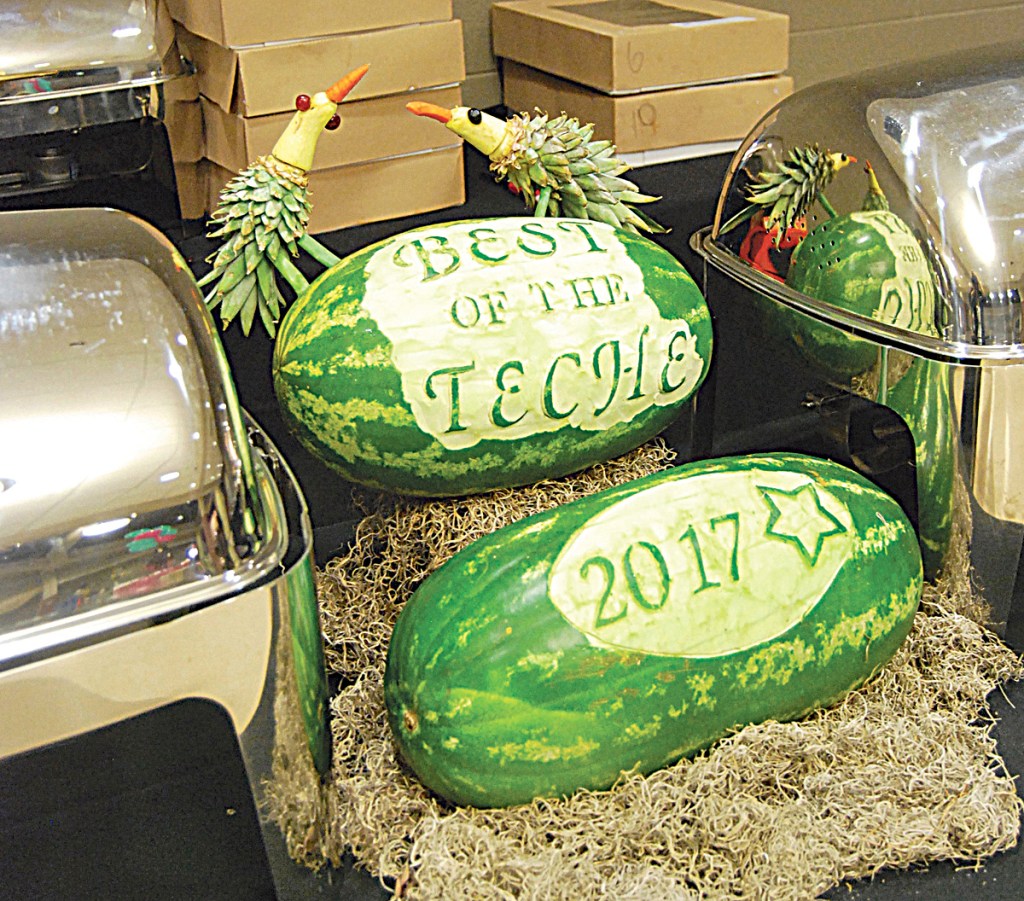Mastering Marinades
Published 5:00 am Wednesday, August 2, 2017

- Vern’s BBQ & Catering dressed the fruits and vegetables for the occasion Friday night at the Sock Hop.
Timing and seasonings make the mix to perfection
Trending
Grilled foods boast inviting flavors that put many diners on the lookout for second helpings. Quite often the magic behind grilled meals lies in the marinade used to give foods that flavorful kick.
Marinades can be used to enhance the flavor of meats, vegetables and poultry. While marinades add flavor, they also may be responsible for some other benefits in grilled foods. Good chefs know how to mix the spices. For the rest, recipes are best.
Marinades add flavor
Defined as a savory acidic sauce in which food is soaked to enrich its flavor, marinades help break down fiber and tenderize certain foods. The base of many marinades include vinegar, lemon juice or wine, and marinades can be enhanced with spices, oil and herbs.
It’s important not to let foods sit in marinades for too long, as any alcohol, acid or salt in the mixture can chemically “cook” the food in a process known as “denaturing.” Adhere to timing recommendations when using store-bought marinades, and keep such guidelines in mind when using homemade marinades as well. Many may tell you to let foods sit no longer than four hours. Marinades with citrus juices may require even less time for flavor to penetrate.
Timing the Soak
Trending
The timing of marinade use also will depend on the foods being marinated. Delicate items, such as seafood, may change with regard to texture or color in a matter of minutes.
It’s important to always marinate foods in the refrigerator. Food left sitting out on a counter — even when it’s in a marinade — invites the growth of bacteria. If a recipe calls for marinating at room temperature, continue to marinate in the refrigerator, but extend the length of time you marinate. This helps to prevent foodborne illnesses.
When marinating, use plastic or glass containers so the marinade does not cause a chemical reaction, which may occur if you marinate foods in metal containers. Discard all marinades for raw meats and poultry when the time comes to cook the foods, as leftover marinades may contain bacteria that makes them unsafe to reuse on other foods.
Nutritional Benefits
In addition to flavor, marinades may improve the nutritional value of grilled foods. In 2008, researchers at Kansas State University discovered that marinating meat in antioxidant-rich spice blends can reduce the risk of forming heterocyclic amines, or HCAs, by more than 80 percent. HCAs are harmful, cancer-causing compounds that form when food chars over an open flame at high temperatures. Marinades must be rich in spices to have any HCA-busting properties.
Marinades are a secret weapon in the creation of tasty, tender and healthy foods. They come in quite handy when grilling, and add an extra dose of flavor when cooking over high heat.
Beating the Heat
Some people really like to grill during the summer. Others, are barely surviving the summer heat. Drinking plenty of water is definitely suggested, but a more enjoyable refreshing treat is eating watermellon.
My mother use to tell me about her grandfather growing watermelons. They were not a cash crop for the family, just grown for enjoyment. If they cut one open, after it sat in the creek and got real cold, and it was not sweet enough, they threw it in the cow pasture and cut open another one.
Watermelons provide cooling, juicy refreshment during the warm days of summer. But while they’re most associated with summer, watermelons can typically be found in grocery stores year-round. Watermelons are members of the cucurbitaceae family, which includes other gourds, such as pumpkin, squash and cucumber.
Watermelons can be considered a fruit or a vegetable. In some areas of the world, watermelons are considered a fruit used primarily in snacks and desserts. In Russia, watermelon rind is pickled, while some Asian countries stir-fry or stew watermelons.
To quench one’s curiosity about watermelons, the following facts about this beloved food are courtesy of The Watermelon Board.
• Washing watermelons before cutting into them will help prevent the transfer of any dirt or bacteria into the fleshy center.
• An average 15- to 20-pound watermelon offers 90 6-ounce servings.
• Watermelons grow in warm climates and are harvested from Florida to Guatemala. Residents of the United States who want to enjoy domestically grown watermelons should look for them in June, July and August.
• Seedless watermelons contain small, white “seeds.” These are actually seed coats that didn’t fully form. Crossing watermelons that are a diploid plant (having two sets of chromosomes) with a tetraploid plant (having four sets of chromosomes) will form a fruit with a triploid seed (three sets of chromosomes). It’s the triploid that produces seedless watermelons.
• Whole watermelons do not necessarily need to be refrigerated. But once cut, any remaining pieces should be refrigerated.
• Watermelons are 92 percent water, and they’re the perfect carrying case for beverages. Early explorers even used watermelons as canteens.





